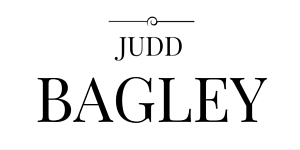The internet really became awesome in the mid 2000s with the trend toward opening up application programming interfaces (APIs) to the software developing public. These made it easy to create websites in which diverse webservices could be combined in ways not necessarily anticipated by the webservice developers themselves. This phenomenon is known as mashup and mashups have come to be among the best features of the web.
When else do you get to see slices of life like this one? In a recent Geoguessr.com challenge, I was confronted with this priceless scene.
One of the most commonly applied APIs is location data. Specifically, the Google Maps API, which makes it easy to locations with extremely practical geodata, such as street view images, user generated photographs and map pinning.
To date, one of my top applications of the Google Maps API is the website Geoguessr.com. This thing was pretty much made specifically for me. When you go to the site, you’re randomly plopped down on some road somewhere on the earth without a shred of identifying information, apart from what you can see from Google Streetview at that location. You can move around as far as you want and zoom in on the images around you. Once you think you’ve identified your location, you place a pin on a map and make your guess. Depending on how close you are to the actual location, you are assigned points and then begin a second and third rounds.
The key to high scores is a knowledge of the world. You look for clues such as writing on street signs, which side of the street cars drive on, architectural features, climactic or geographic features and whatever else you can scrounge up by way of evidence. The effect is one of exploration with an emphasis on spotting details you might not look for even if you were actually visiting that location. What’s more, you’ll find yourself moving down obscure alleyways you normally would never go near as a tourist. There, you’ll see local culture like few others ever will.
On the above challenge, I guessed northern Mexico (orange pin) but the location was actually in central Mexico (white flag). A miss of a few hundred miles. Not bad but not my best, either.
The best guess I’ve ever made came up about 10 feet from the actual location. On that occasion, I found myself on what was clearly a small tropical island that appeared mostly abandoned. I moved around until I discovered a bowling alley with a sign written in a 60s era font that read “Midway Bowling”. I placed my pin on the Midway Island in the Pacific and, given how small the place is, very nearly placed it right atop my starting point.
The biggest misses I regularly make happen when I guess a place is in Australia it turns out to be in South Africa. It should be noted that those two countries look remarkably similar in every respect.
There’s also a challenge mode, where you take your three best guesses and then see if your friend can do better.
If you think you know something about the world and need a break from work (and one that likely exercises a part of your brain that most jobs don’t) then check out Geoguessr.com. Just set a little alarm before you do, lest you spend the rest of the day there.

